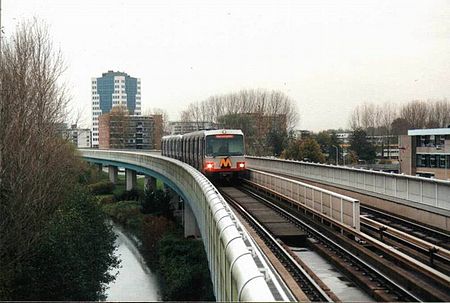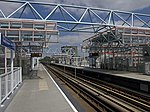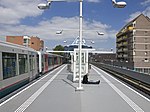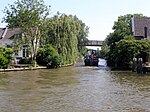Slotlaan metro station
1994 establishments in the NetherlandsCapelle aan den IJsselEuropean rapid transit stubsNetherlands transport stubsRailway stations opened in 1994 ... and 2 more
Rotterdam MetroSouth Holland geography stubs

Slotlaan is an elevated station on Line C of the Rotterdam Metro and is situated in the town of Capelle aan den IJssel, just east of Rotterdam. The station was opened on 26 May 1994 as part of the extension of the East-West Line or Caland Line from Capelsebrug station towards De Terp station. The station consists of two tracks with a platform on both sides. Near the station is the Comenius College middle school from Capelle aan den IJssel.
Excerpt from the Wikipedia article Slotlaan metro station (License: CC BY-SA 3.0, Authors, Images).Slotlaan metro station
Louis Couperusplaats,
Geographical coordinates (GPS) Address Nearby Places Show on map
Geographical coordinates (GPS)
| Latitude | Longitude |
|---|---|
| N 51.928502777778 ° | E 4.5784833333333 ° |
Address
Slotlaan
Louis Couperusplaats
2902 XA
South Holland, Netherlands
Open on Google Maps









